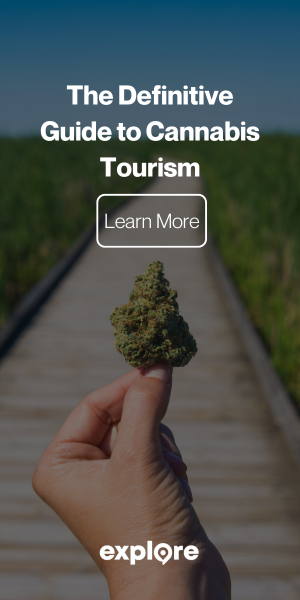Weed, marijuana, cannabis, pot, grass, ganja, dope, Mary Jane, hash: whatever you call it, we’re talking about that good stuff. Cannabis has been used medicinally for thousands of years, but politics in the 20th century led to the criminalization of weed around the world. Lucky for us, that legal status is quickly changing.
As more countries move toward legalization, the cannabis industry is blowing up. Cannabis Tourism, Weed dispensaries, weed festivals, weed clubs, weed hotels— the options for getting lit when you travel are growing every day.
While more and more folks are getting their hands on the good green, the rules, regulations, and laws remain super hazy. Can you travel with weed? Across U.S. state lines? On a plane? How do you purchase it legally? What are the best places for weed vacations? Are there weed parties?
To help answer all of your questions (and more), here’s our complete guide to cannabis travel around the globe.
Guide to Cannabis Travel
Where is Weed Legal?
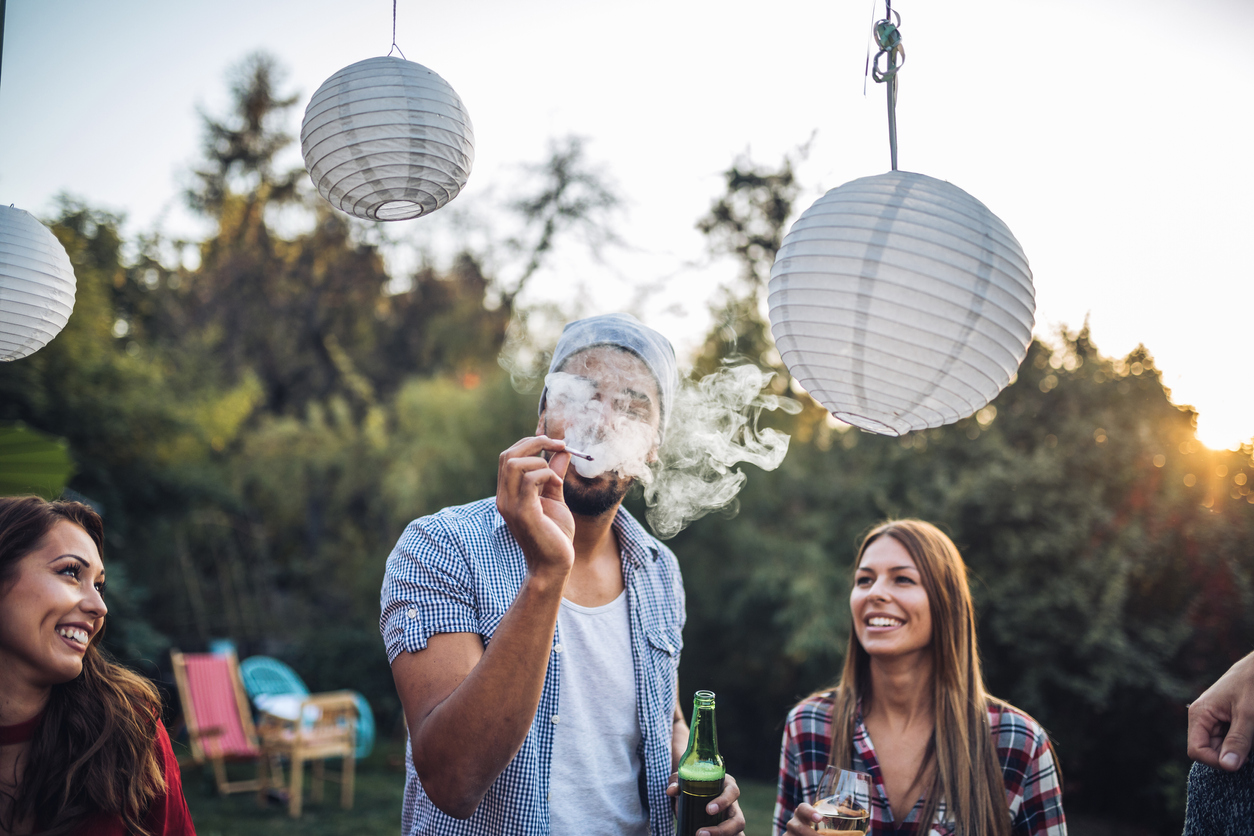
In 2018, Canada made headlines when they became the second country in the world after Uruguay to fully legalize and regulate marijuana nationwide.
Wondering if weed is legal in your country or state? Here’s the scoop on the legalization of cannabis around the world (updated June 2024):
Weed Legalization Map by State
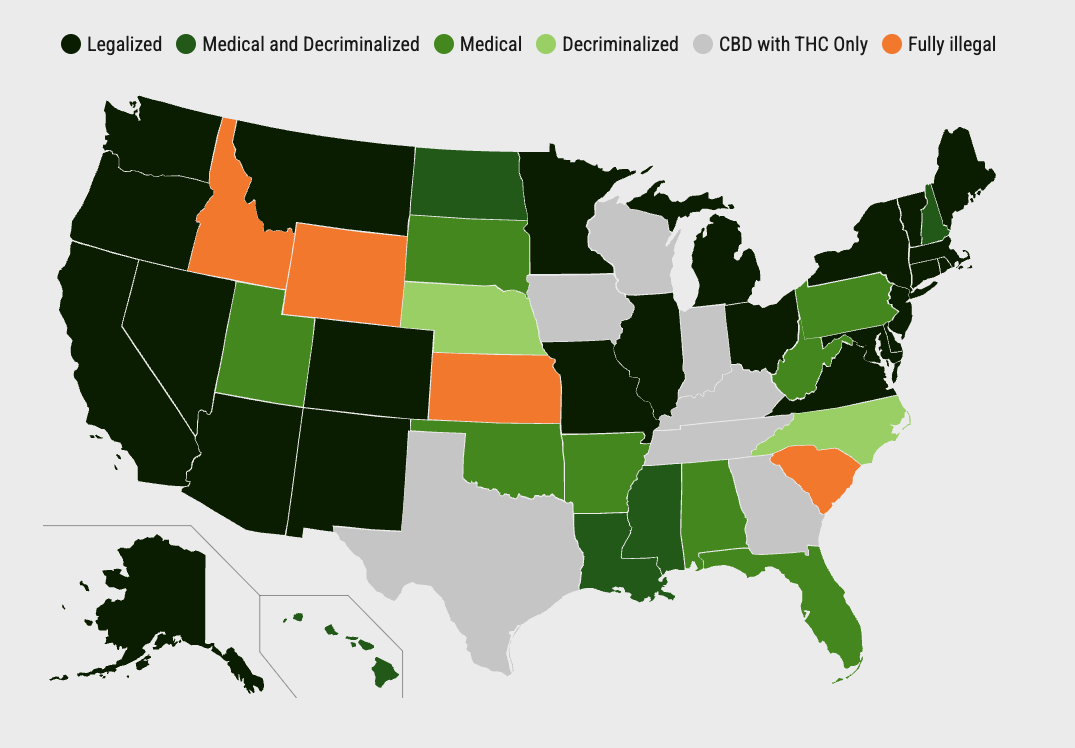
Map of weed legality by U.S. state. Courtesy of: disa.com
The use and possession of weed remains illegal at the federal level, but personal possession and consumption are legal in half of the U.S. Recreational weed is legal in 24 states plus Washington, D.C., the Commonwealth of the Northern Mariana Islands, Guam, and the U.S. Virgin Islands.
Where weed is legal recreationally in the U.S.: Alaska, Arizona, California, Colorado, Connecticut, Delaware, Illinois, Maine, Maryland, Massachusetts, Michigan, Minnesota, Missouri, Montana, Nevada, New Jersey, New Mexico, New York, Ohio, Oregon, Rhode Island, Vermont, Virginia, and Washington.
Medical marijuana is legal in 38 states plus Washington, D.C., Puerto Rico, and the U.S. Virgin Islands.
Where medical marijuana is legal in the U.S.: Alabama, Alaska, Arizona, Arkansas, California, Colorado, Connecticut, Delaware, Florida, Hawaii, Illinois, Kentucky, Louisiana, Maine, Maryland, Massachusetts, Michigan, Minnesota, Mississippi, Missouri, Montana, Nevada, New Hampshire, New Jersey, New Mexico, New York, North Dakota, Ohio, Oklahoma, Oregon, Pennsylvania, Rhode Island, South Dakota, Utah, Vermont, Virginia, Washington, and West Virginia.
Where weed is decriminalized in the US: Hawaii, Louisiana (partially), Mississippi, Nebraska, New Hampshire, North Carolina (partially), North Dakota (partially)
U.S. states with limited access to low THC products only: Georgia, Indiana, Iowa, Kansas, Kentucky, North Carolina, South Carolina, Tennessee, Texas, Wisconsin, and Wyoming.
For up-to-date info, consult your state statutes.
Weed Legalization Map by Country
Some countries, like Mexico, have legalized cannabis for recreational use but licensed sales were never authorized therefore, the laws remain hazy. In other countries, like the Netherlands, cannabis is illegal but decriminalized. Under a policy of toleration regarding soft drugs, cannabis sales are permitted at licensed coffee shops.
Countries where recreational cannabis is legal: Canada, Georgia, Germany, Luxembourg, Malta, Mexico, South Africa, and Uruguay. Even though cannabis is legal, not every country has authorized sales.
Countries where cannabis is illegal but tolerated in certain circumstances: Cambodia, where backpackers feast on “happy” pizza topped with cannabis in Phnom Penh, the Netherlands, where cannabis is sold at licensed coffee shops, and Switzerland, where cannabis products containing less than 1% THC are tolerated.
Countries where medical marijuana is legal: Argentina, Australia, Brazil, Canada, Chile, Colombia, Croatia, Cyprus, Czech Republic, Estonia, Finland, France, Georgia, Germany, Greece, Ireland, Israel, Italy, Jamaica, Luxembourg, Malta, Mexico, the Netherlands, New Zealand, Peru, Poland, Portugal, Republic of North Macedonia, Slovenia, South Africa, South Korea, Spain, Sri Lanka, Switzerland, Thailand and Thailand, United Kingdom, Uruguay, and Zimbabwe.
Countries where Nabiximols (Sativex), an oral spray, is authorized: Austria, Belgium, Brazil, Denmark, Finland, Hungary, Iceland, Ireland, Italy, Kuwait, Liechtenstein, Luxembourg, Malta, New Zealand, Northern Ireland, Norway, Portugal, Scotland, Slovakia, Spain, Sweden, and the United Kingdom.
Countries where marijuana is decriminalized: Antigua and Barbuda, Austria, Belgium, Belize, Bolivia, Bulgaria, Costa Rica, Croatia, Czech Republic, Denmark, Ecuador, Estonia, Finland, Germany, Italy, Ireland, Latvia, Lithuania, Luxembourg, Malta, Moldova, the Netherlands, Norway, Poland, Portugal, Romania, Saint Kitts and Nevis, Slovakia, Slovenia, Spain, Sweden, and Turkey.
For up-to-date info, view this map of weed legalization by country.
Can You Fly With Weed?
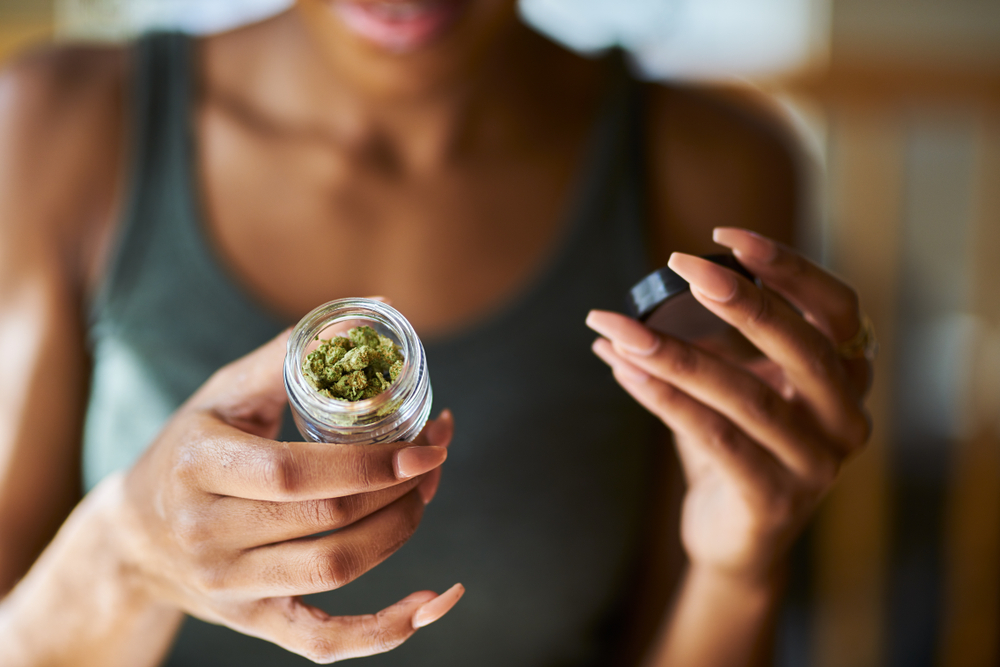
Now that we’ve figured out the world’s best weed-friendly countries and states (and where to buy it safely), one big question is: can you fly with weed? The answer is … it’s complicated.
It is illegal to transport weed across state lines, even if you’re going from one state where it is legal to another. Even if you’re in a state or country where cannabis is legal, the moment you walk into an airport, you are officially in federal jurisdiction territory. For example, if you purchase cannabis and are flying out of a 420-friendly state, like Colorado, you’re technically still breaking the law because cannabis is illegal on a federal level and strictly prohibited on all federal property in the United States.
Still confused? Here are a few questions (and answers!) on what you should expect before flying with weed.
Can You Bring a Vape Pen on a Plane?
Yes, you can bring a vape pen on a plane, but only in your carry-on. The Transportation Security Administration states that “Electronic smoking devices are allowed only in carry-on baggage. Passengers are required to take effective measures to prevent accidental activation of the heating element of the device when transporting the devices. See the FAA regulations for examples of effective measures. Each lithium-ion battery must not exceed a Watt-hour (Wh) rating of 100 Wh, or for lithium metal batteries, a lithium content of 2 grams.
Check with your airline about any limitations on the number of devices that can be carried for personal use by a passenger. The final decision rests with the TSA officer on whether an item is allowed through the checkpoint.” ”
While there’s no specification on the TSA website about whether marijuana vape pens fall under this policy, vape pens and marijuana vape pens are indistinguishable. When traveling with any type of cannabis product, use common sense and keep your products concealed for the duration of your trip. The use of vape pens and marijuana is forbidden on the plane and will result in passenger arrest.
Can You Fly with Medical Marijuana?
Yes, generally you can fly with medical marijuana in both your carry-on and checked bags in the US, with some restrictions. Marijuana and some cannabis-infused products (CBD oil) are still illegal under federal law unless the products contain no more than 0.3 percent THC or are approved by the FDA. If caught with more, TSA is well within its rights to report violations to local, state, or federal authorities.
Travelers are permitted to travel with cannabis products approved by the Food and Drug Administration like Epidiolex, Marinol, and Syndros.
To ensure you do not run into any trouble, travel with your medical marijuana card or certificate, pack your weed in airtight containers to contain the odor, and only fly with small amounts of weed that won’t attract attention.
Is It Legal To Fly With Recreational Weed?
Is it possible? Yes! Is it legal? Nope. However, many recreational marijuana users feel comfortable flying within the US with small amounts of weed. They, of course, follow a few simple steps to ensure to avoid any trouble.
As previously mentioned, when traveling with weed and weed products, always place them in your carry-on, not your checked baggage. Checked bags are regularly searched at random, so your best bet at avoiding unwanted attention is to pack your weed in your carry-on in a nondescript, airtight container. Pill bottles are great for joints and small amounts of cannabis.
If you plan on flying with weed, keep in mind that you are breaking the law, and cannabis is considered federally to be the same as flying with heroin or cocaine. If you’re flying anywhere with a large amount of weed and you are caught, you will likely be charged with the intent to distribute, which is a serious offense, so only fly with small amounts.
Under no circumstance should you attempt to fly with weed internationally. Many countries have signed treaties like the Single Convention on Narcotic Drugs, which requires the criminalization of cannabis. The penalties in countries around the world are often stiff, including lengthy jail terms and even death.
Should You Fly With Edibles?
While still illegal if purchased for recreational use, if you want to try to get on a plane with cannabis, flying domestically within the US with edibles may be the easiest way to go. Store all edibles in your carry-on and remove all of the original packaging for the best chance of making it through TSA safely. It’s the lowest-risk option, but it is still illegal and not risk-free.
Can you fly with delta-8 and other federally legal cannabinoids?
The popularity of legal cannabinoids has experienced significant growth in the U.S. in recent years. Delta-8 tetrahydrocannabinol “is a psychoactive substance found in the Cannabis sativa plant, of which marijuana and hemp are two varieties,” according to the U.S. Food & Drug Administration. Under the Agriculture Improvement Act of 2018, it “authorized the production of hemp and removed hemp and hemp seeds from the Drug Enforcement Administration’s (DEA) schedule of Controlled Substances.”
Even though Delta-8 THC has some of the same psychoactive and medicinal benefits as marijuana, it is not marijuana. At the federal level hemp is legal, although some states ban hemp. It is legal to fly with these products as long as they contain less than 0.3% delta-9 THC. Keep them in their original packaging and you should be good to go.
What Happens if You Get Caught With Weed at the Airport?
TSA officers are focused on looking for security threats, but when they come across illegal items, they have a duty to report them to local law enforcement.
According to the TSA website: “TSA security officers do not search for marijuana or other illegal drugs, but if any illegal substance is discovered during security screening, TSA will refer the matter to a law enforcement officer.” From there, it’s up to the local authorities to decide if they want to pursue charges or simply confiscate your weed and let you go.
If you’re flying with small amounts of weed in a legal state, you’ll likely be waived through, asked to put your weed in an amnesty box, or simply have your weed confiscated and thrown out.
Remember, it is still a risk, and getting arrested is always a possible outcome. Flying with any amount of marijuana is risking trouble, even in 420-friendly states.
How do you bring weed on a plane?
Okay, so you understand the risks and still want to fly with weed. Now what? Use common sense and only travel with a small amount. When packing, remember to only pack marijuana products in your carry-on bag. It’s vital to use an airtight container to hold your weed, edibles, and pre-rolled joints. If your container is not airtight, the easily identifiable smell will not be contained and you’ll probably get caught. Ziplock bags, pill bottles, and marijuana-specific stash devices are ideal containers for flying with marijuana.
Can you travel with weed across state lines?
Generally speaking, traveling with weed across state lines is not a good idea because it is illegal. So, leaving Colorado after a mountain vacation with weed in tow could have severe consequences. Unlike TSA agents, police officers do prioritize finding weed. Additionally, cops tend to pull over travelers as they cross state lines.
If an officer claims they smell marijuana, in some states they may have probable cause to search your vehicle. If you do plan on crossing state lines with marijuana, keep your weed in an airtight container and store it in your locked glove compartment where a cop would, in most instances, need a warrant to search.
Should you travel with cannabis when visiting different countries?
Marijuana tourism is a worldwide trend and weed legalization is spreading rapidly across the globe. Still, countries with legalized recreational marijuana forbid crossing borders with the drug. So, not only can you not pack your favorite pot brownies, space cakes, and pre-rolls in your suitcase after your trip, but you can’t bring weed into any country either.
If you think you can forgo flying and transport weed by sea, it is illegal to bring marijuana, even medical marijuana, or edibles on a cruise ship.
Everything You Need to Know About Dispensaries
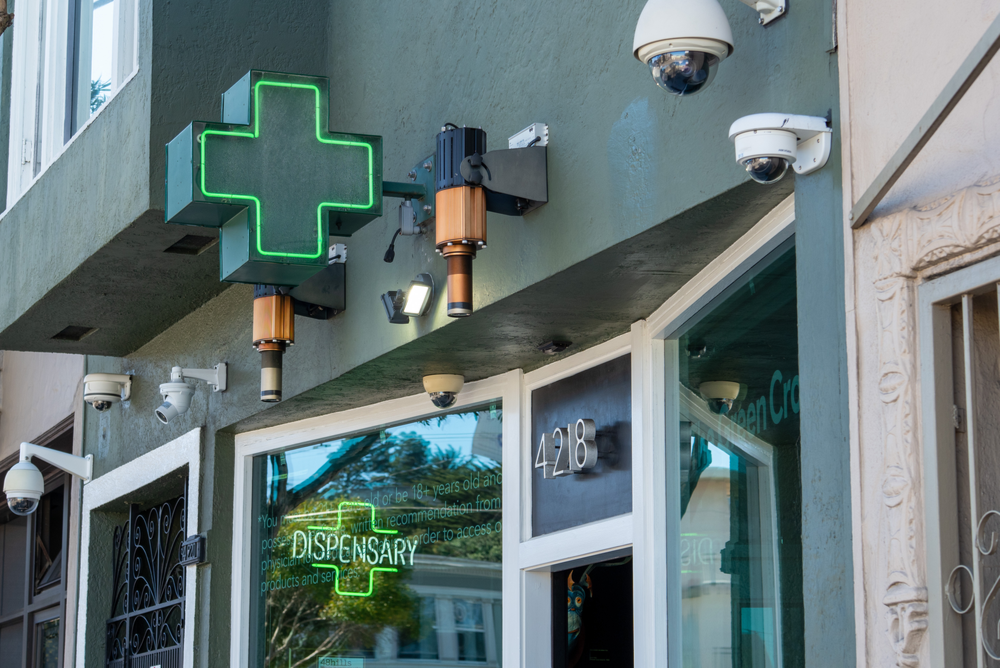
Since the Dutch Opium Act was passed in 1976, folks 18 and older have been able to walk into a “coffee shop” in Amsterdam, lay down a few euros (guilders back in the day), and walk away with legal cannabis and paraphernalia without a worry. It took the rest of the world decades to catch up, but today, licensed dispensaries—or weed shops—are popping up around the world. There are nearly 15,000 dispensaries in the US and 79% of Americans live in a county with at least one cannabis dispensary, according to Pew Research.
Medical Dispensaries
Medical dispensaries provide patients with a secure location to purchase medically prescribed cannabis to soothe and treat ailments. They’re usually regulated and taxed differently than recreational cannabis dispensaries, so prices may vary between the two. Medical dispensaries are licensed and heavily regulated, ensuring that the marijuana sold is pure and has not come into contact with hard drugs. Before visiting a medical dispensary, you’ll need:
- A prescription from your doctor, medical cannabis certification, or whatever else is required by your state.
- A valid, unexpired government-issued photo ID. In most cases, you must be 18 or older to obtain medical cannabis in the U.S.
Recreational Dispensaries
Unlike medical dispensaries, recreational dispensaries are available for people without a prescription from a doctor. Adult-use/recreational shops require fewer prerequisites than a medical dispensary. Before visiting a recreational dispensary, you’ll need:
• A valid, unexpired government-issued photo ID. You must be 21 or older to purchase recreational cannabis in the U.S.
420-Friendly Hotels
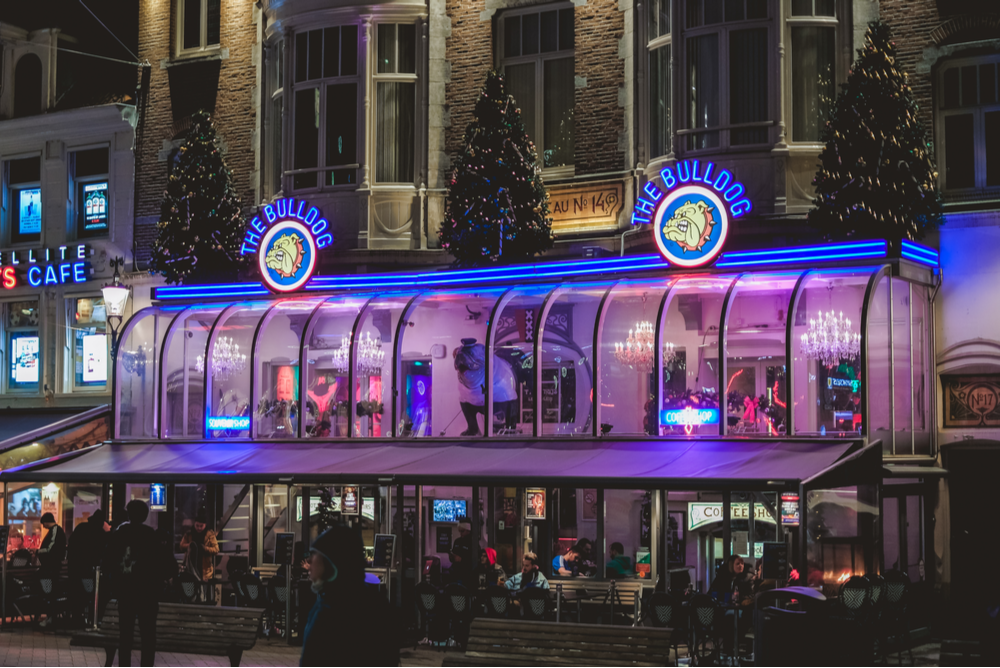
Weed and a good night’s sleep is pretty much synonymous. It may be illegal to smoke inside most public spaces around the world, but hotels, hostels, and resorts have found plenty of ways to skirt the law in favor of a good time.
From cannabis-friendly, adults-only hotels like The Lexi in Las Vegas to Oregrown 420 Package welcome kits at The Jupiter in Portland, 420 resorts and hotels are opening all over the place.
Cannabis-centric websites like Bud and Breakfast and HiBnb offer databases of listings for 420-friendly accommodations around the world. These sites allow travelers to search for hotels, hostels, and resorts that offer cannabis-friendly amenities and ensure that their stays are comfortable and enjoyable.
In addition to offering cannabis-friendly amenities, many 420-friendly hotels also provide information on local dispensaries, cannabis tours, and other cannabis-related activities in the area. Some hotels even offer CBD-infused spa treatments or other wellness experiences.
Get more ideas from seeker on
Cannabis Cafes & Clubs
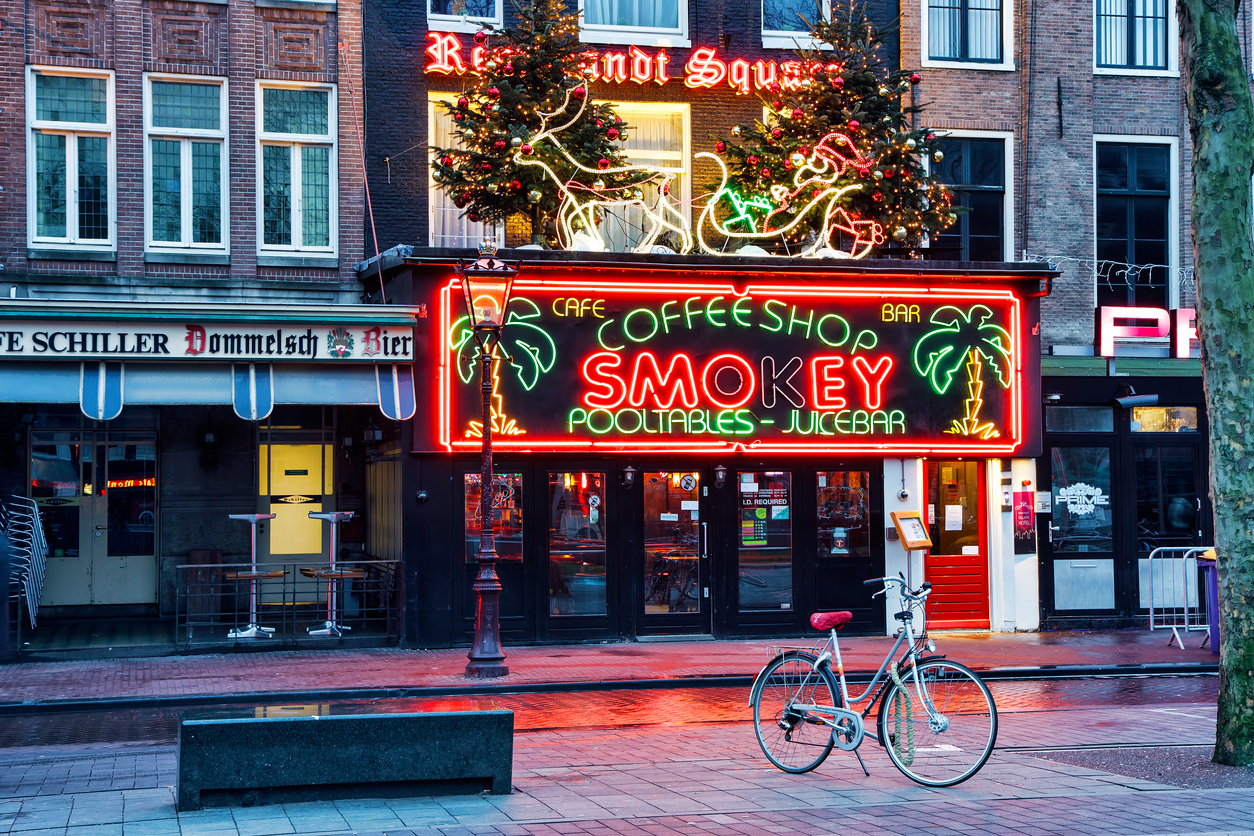
If you’ve been to Europe, you’ve heard of weed cafes. But what about cannabis clubs?
The first cannabis club popped up in Barcelona in 2001 as a way to legally obtain and consume weed in the city. While recreational weed is still illegal in Spain, clubs are able to exist on a technicality: Consumption and cultivation by adults in a private space is legal. This legal loophole has allowed cannabis clubs to exist and thrive in Spain for decades.
Cannabis clubs are membership-based establishments in countries like Spain and Malta that operate much like dispensaries. Members pay a fee to access the club, and then they’re able to purchase and consume cannabis on the premises. These clubs are typically designed to provide a safe and comfortable space for cannabis users to consume their preferred strains of cannabis without fear of legal repercussions.
Cannabis clubs typically require members to be at least 18 years old and to provide identification when joining. Members are also expected to abide by certain rules, such as not sharing cannabis with non-members and not selling cannabis to others. Most clubs also have a maximum amount of cannabis that members can purchase and consume in a single visit.
In addition to providing a safe and legal space for cannabis consumption, cannabis clubs can also offer a social aspect for members. Many clubs organize events and activities for members, such as live music performances, educational workshops, and cannabis tastings.
Get more ideas from seeker on
Cannabis & CBD Spas
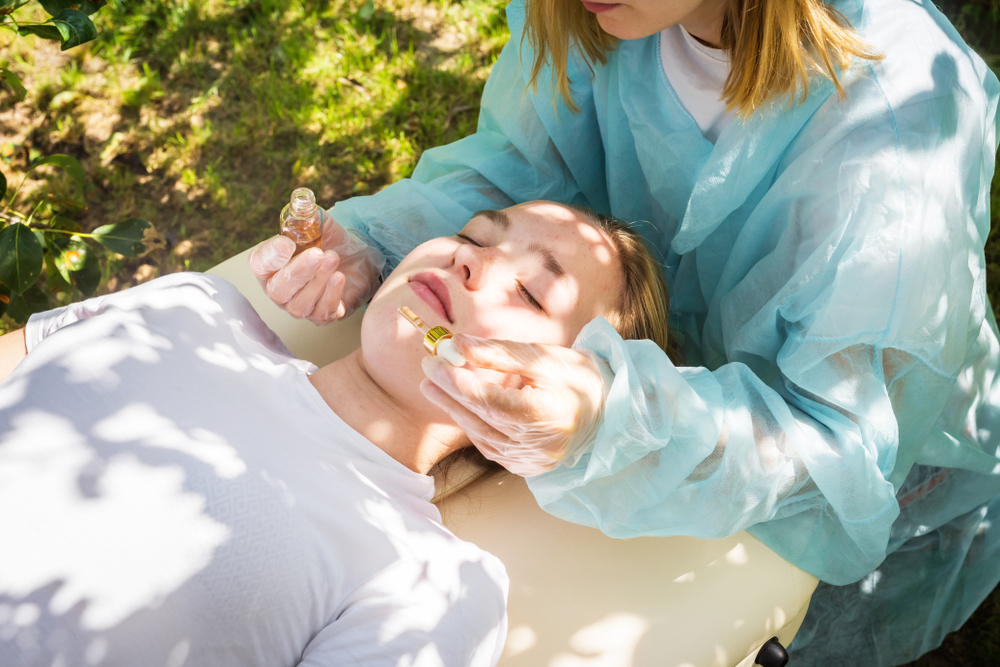
We get it, you love weed. But do you love it enough to let a stranger rub it all over your body?
Cannabis spas are another emerging trend in the cannabis industry, offering a unique way for cannabis enthusiasts to relax and unwind. These spas typically offer a range of cannabis-infused treatments and therapies, including massages, facials, and body wraps.
Cannabis spas have their roots in ancient cultures, where cannabis was used for medicinal and therapeutic purposes. Today, cannabis spas have been modernized, incorporating the latest technologies and techniques to provide a luxurious and immersive experience for guests.
At a cannabis spa, guests can expect to be greeted by a peaceful and relaxing environment, with soothing music, comfortable seating, and aromatherapy scents. Before any treatments begin, guests are usually required to fill out a medical questionnaire and provide identification to confirm their age.
The treatments at a cannabis spa are typically infused with cannabis or CBD, which are known to have calming and anti-inflammatory properties. These treatments can range from a simple foot massage to a full-body wrap, with cannabis-infused products like oils, lotions, and balms.
One of the most popular treatments at cannabis spas is the cannabis-infused massage, which involves the use of cannabis-infused oils to soothe sore muscles and promote relaxation. Cannabis facials are also gaining popularity, as they can help to reduce inflammation and improve skin health.
While cannabis spas are still relatively new, they have quickly become a popular destination for cannabis enthusiasts and those looking for a unique spa experience. As cannabis continues to become more widely accepted, it is likely that we will see more cannabis spas opening up around the world, providing a new way for people to enjoy the benefits of this versatile plant.
420 Tours and Weed Vacations
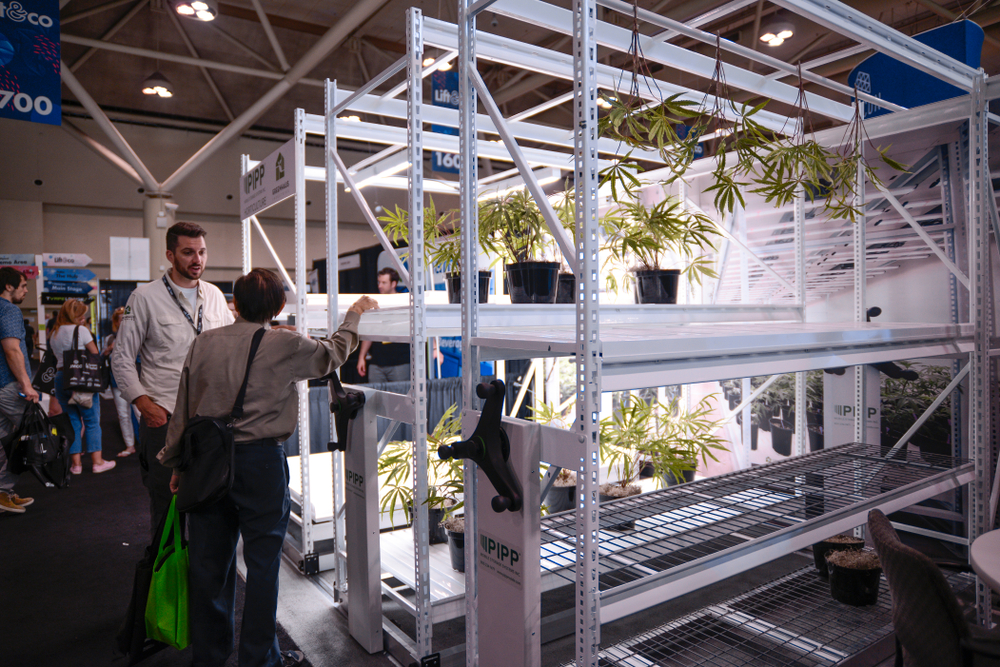
As cannabis legalization continues to spread across the globe, a new type of Seeker is emerging: cannabis travelers, or people who look for cannabis-friendly destinations for some much-needed R&R (without giving up the green). Cannabis tourism is a $17 billion industry.
420 tours and weed vacations are in high-demand among cannabis enthusiasts who want to explore the world of cannabis and its culture. These tours and vacations provide a unique and immersive experience for travelers who want to learn more about the plant and its uses, while also enjoying the local sights and activities.
420 tours are typically guided tours that take visitors to different cannabis-related destinations, like dispensaries, grow facilities, and cannabis cafes. These tours can be found in many places around the world where cannabis is legal, including Amsterdam, Colorado, and California.
On a 420 tour, visitors can expect to learn about the history of cannabis, its various strains, and the different methods of consumption. They can also see first-hand how cannabis is grown and processed, and even try some samples themselves. Many 420 tours also include visits to local attractions and cultural landmarks, allowing visitors to fully immerse themselves in the local culture.
Weed vacations, on the other hand, are more like traditional vacations, but with a cannabis twist. These vacations are designed to provide cannabis enthusiasts with a relaxing and enjoyable experience, while also offering the opportunity to learn more about the plant and its culture.
Weed vacations can take many forms, from beachside retreats to mountain getaways, and can include activities such as cannabis cooking classes, cannabis yoga, and cannabis-infused spa treatments. These vacations can also provide opportunities to explore local attractions and activities, such as hiking, skiing, and sightseeing.
Both 420 tours and weed vacations offer a unique and immersive experience for cannabis enthusiasts who want to learn more about the plant and its culture. As cannabis becomes more widely accepted around the world, it is likely that we will see more of these tours and vacations popping up, providing travelers with a new and exciting way to explore the world of cannabis.
420 Festivals
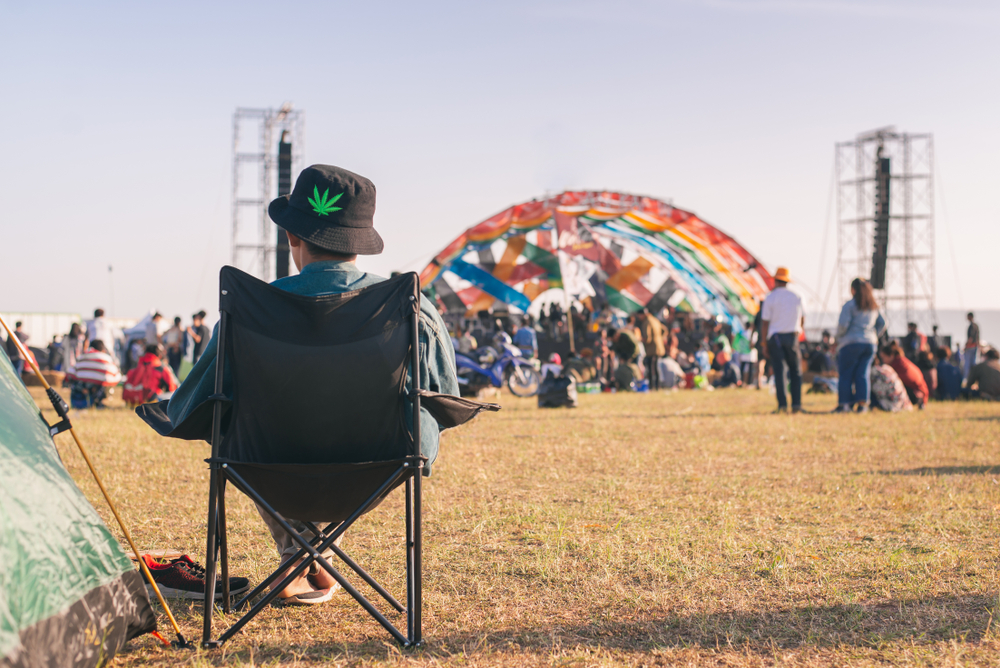
420 events and festivals are generally a good time, but believe it or not, they also help break stigmas and pave the way for legalization around the world. Festival organizers pull off throwing events in states and countries where cannabis is still illegal via the Temporary Autonomous Zone principle—creating temporary spaces that elude formal structures of control.
Today, 420 festivals can take many forms, from outdoor concerts to cannabis expos, and are typically held on or around April 20th, which is considered a holiday among cannabis enthusiasts.
420 festivals provide a unique opportunity for cannabis enthusiasts to come together and celebrate their love for the plant. These events often feature live music, food and drink vendors, cannabis dispensaries, and educational seminars and workshops.
One of the most famous 420 festivals is the annual “Sweetwater 420 Fest” in Atlanta, Georgia. This festival features three days of live music, art exhibits, and cannabis-related vendors and attractions.
Other popular 420 festivals and events include the High Times Cannabis Cup, which is held in various locations around the world and features a competition for the best cannabis strains and products, as well as the Hash Bash in Ann Arbor, Michigan, which has been held annually since 1972 and is one of the longest-running cannabis events in the world.
420 festivals and events also provide an opportunity for cannabis advocates to come together and push for the legalization of cannabis. Many events feature speakers and activists who share their knowledge and experiences with the crowd, and use the event as a platform to raise awareness and advocate for cannabis reform.
Overall, 420 festivals and events are a fun and exciting way for cannabis enthusiasts to come together and celebrate their love for the plant. As cannabis continues to become more widely accepted around the world, it is likely that we will see more of these events popping up, providing a platform for cannabis culture to thrive and grow.
